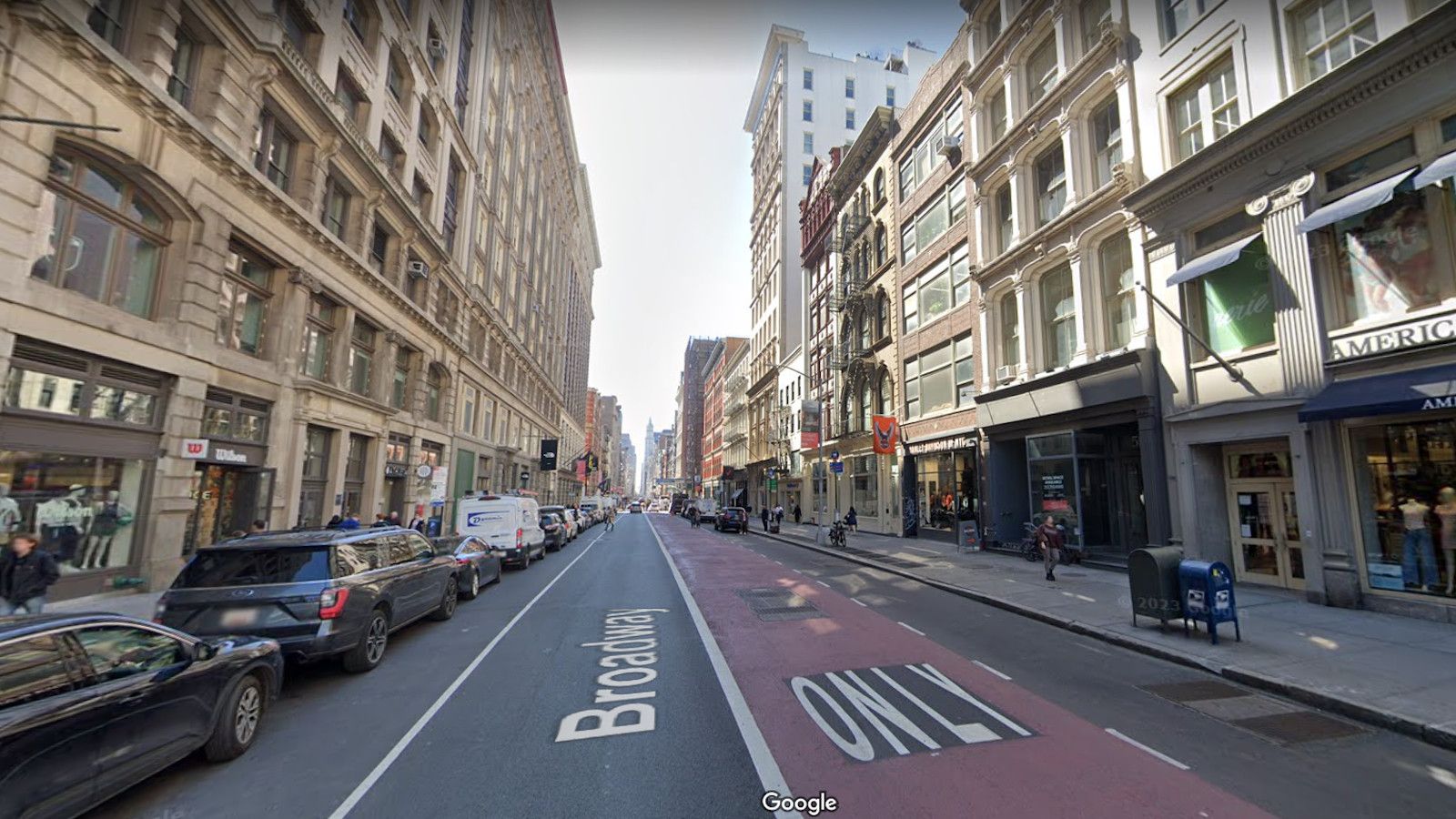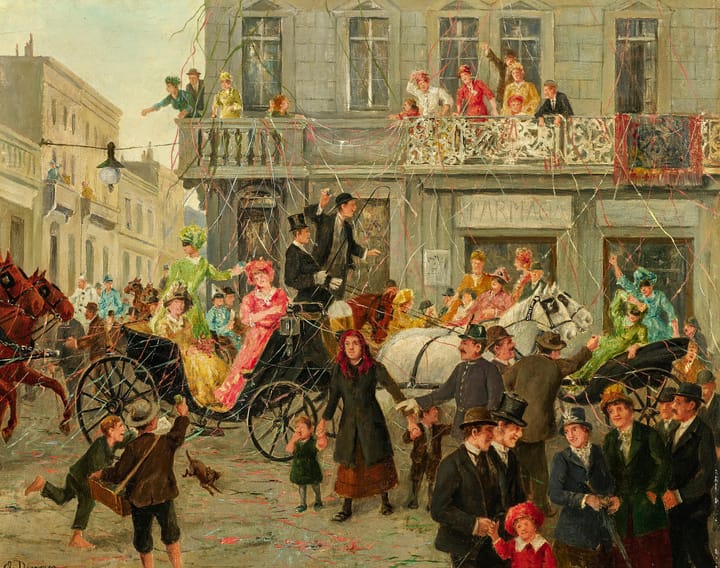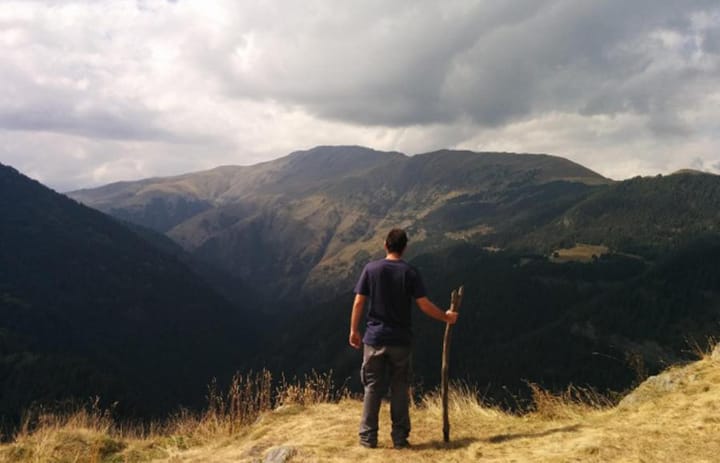Historic Painting: Winter Scene on Broadway by Hippolyte Sebron, 1855.
There's a lot going on in this famous scene of Manhattan in a mid-19th century winter.

I have seen this picture in various guises online for years now and have always been fascinated by it. It is misidentified in Wikimedia Commons (Wikipedia's media/image archive) as depicting New York City in 1840. Actually it dates from a decade and a half later, probably 1855, though possibly 1857. The painter was the French-born landscape and city painter Hippolyte Sebron, known initially for creating dioramas in Paris. After the Revolutions of 1848 in Europe, during which some of his work was destroyed, Sebron ventured across the Atlantic and spent the first half of the next decade touring Canada and the United States. This painting seems to be drawn from scenes he observed while staying in New York City at this time.
There's a lot going on in "Winter Scene on Broadway." Well-to-do New Yorkers are riding carriages and sleighs at the right. Today we think of sleighing as a leisure activity around the holiday season, but sleighs were a necessity in the 18th and 19th centuries, even in urban areas, if you wanted to get around. Snow was not generally cleared and streets were not plowed until the advent of the automobile. In the center-left we see a fire company responding to a call, though the building on fire is not shown. Wealthy-looking women pass down the sidewalk at the left, mingling with soldiers in uniform and several people holding signs in front of a building. Our modern sensibilities cause us to jump to the conclusion these must be picketers, but actually they're advertisers. You can't read the signs but I believe they're supposed to be advertising P.T. Barnum's museum, which was located on Broadway. There are no less than five American flags visible.
New York in the 1850s was a wild place. The streets were jammed with people, carriages and animals. Rich neighborhoods existed within blocks of desperately poor slums. Cities were unhealthy in general in this period; disease was the major killer. Broadway was the main artery of New York City, connecting the dense settlements of the southern part of Manhattan Island, which had been the historic center of the city, to the expanding northerly parts. Later in the 1850s Central Park would be built which would attract more building and activity northward. In 1855 New York was seething with political, racial and religious resentments, Black against white, Catholic against Protestant, liberal against conservative. This was the heyday of the xenophobic Know Nothing Party which resented the influx of Catholics, mostly Irish, into the city. New York was also a battleground of gangs and organized crime. Gang fights occurred in the streets and public squares. Martin Scorsese's 2002 film Gangs of New York is not accurate in many respects, but its general depiction of the city as a crime-riddled hellscape, studded here and there with fabulously wealthy enclaves, isn't far off.
Today, of course, Broadway is a shopping and commercial district. This part of it is not up as far as the theater district which centers around Times Square farther north. I went on Google Maps to find the spot closest, I think, to where "Winter Scene on Broadway" was supposed to be. Here it is, below, pictured in April 2023.

After his American-Canadian sojourn, Hippolyte Sebron returned to France in 1855 and continued painting scenes from Europe and the Middle East, including ancient ruins. His paintings strike me in exactly the ways that I appreciate mid and late 19th century art: realistic but romantic, not photo-realistic but conveying some of the almost intangible character of the places he depicts. There are photos of New York from this time period, but given photographic technology in the 1850s we can't see the color or detail that we get from a picture like this one. Despite his obvious skill here, Sebron was thought of as a middling artist without particular distinction. He died in Paris in 1879.
The original of this painting is in the French-American Museum at Chateau Blérancourt in France. While researching this article I noticed there are various versions of the picture with slightly different coloring. I believe this is because the painting was made into a popular print in the 1850s, which washed out the color a bit. Many of the images you see of it online are probably from the prints (including possibly this one; I had to adjust the color slightly). I may feature more Hippolyte Sebron pictures in future installments of the Historic Painting series.
The Value Proposition
Why should you be reading this blog, or receiving it as a newsletter? This is why.
☕ This is where I normally put my Ko-fi link. Don't buy me a coffee this week--order my new history book The 50 Most Important Things in History instead for the same price!
🎓 Like learning? Find out what courses I’m currently offering at my website.
📽 More the visual type? Here is my YouTube channel with tons of free history videos.



Comments ()